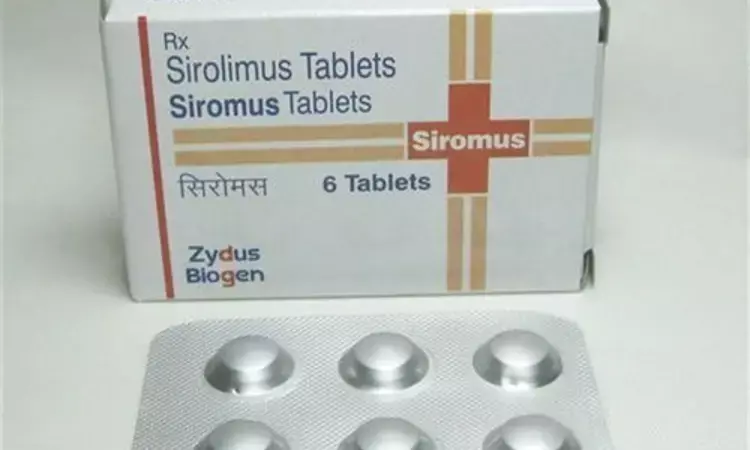- Home
- Medical news & Guidelines
- Anesthesiology
- Cardiology and CTVS
- Critical Care
- Dentistry
- Dermatology
- Diabetes and Endocrinology
- ENT
- Gastroenterology
- Medicine
- Nephrology
- Neurology
- Obstretics-Gynaecology
- Oncology
- Ophthalmology
- Orthopaedics
- Pediatrics-Neonatology
- Psychiatry
- Pulmonology
- Radiology
- Surgery
- Urology
- Laboratory Medicine
- Diet
- Nursing
- Paramedical
- Physiotherapy
- Health news
- Fact Check
- Bone Health Fact Check
- Brain Health Fact Check
- Cancer Related Fact Check
- Child Care Fact Check
- Dental and oral health fact check
- Diabetes and metabolic health fact check
- Diet and Nutrition Fact Check
- Eye and ENT Care Fact Check
- Fitness fact check
- Gut health fact check
- Heart health fact check
- Kidney health fact check
- Medical education fact check
- Men's health fact check
- Respiratory fact check
- Skin and hair care fact check
- Vaccine and Immunization fact check
- Women's health fact check
- AYUSH
- State News
- Andaman and Nicobar Islands
- Andhra Pradesh
- Arunachal Pradesh
- Assam
- Bihar
- Chandigarh
- Chattisgarh
- Dadra and Nagar Haveli
- Daman and Diu
- Delhi
- Goa
- Gujarat
- Haryana
- Himachal Pradesh
- Jammu & Kashmir
- Jharkhand
- Karnataka
- Kerala
- Ladakh
- Lakshadweep
- Madhya Pradesh
- Maharashtra
- Manipur
- Meghalaya
- Mizoram
- Nagaland
- Odisha
- Puducherry
- Punjab
- Rajasthan
- Sikkim
- Tamil Nadu
- Telangana
- Tripura
- Uttar Pradesh
- Uttrakhand
- West Bengal
- Medical Education
- Industry
Sirolimus promising therapy for Lymphatic Malformations in kids, find MRI studies

Lymphatic malformations are abnormalities that arise in the developing lymphatic system, most frequently presenting in the head and neck. A recent study published in the American Journal of Roentgenology suggests treatment with sirolimus in lymphatic malformations in children is associated with significant reductions in volume and signal on T2-weighted MRI.
Extensive lymphatic malformations may cause substantial morbidity. They are typically treated with sclerotherapy, laser therapy, or surgery for localized lesions. Sirolimus, an inhibitor of the mammalian target of rapamycin (mTOR), is a relatively new medical therapy for the treatment of vascular malformations. As the response assessment is not standardized, a research team conducted a study to retrospectively characterize changes on MRI in extensive LM in children treated with sirolimus.
It was a retrospective study on Twenty-five children treated with sirolimus for extensive LM. Researchers determined that MRI closest to therapy initiation as baseline MRI and most recent MRI while on therapy as a follow-up MRI.
"Two pediatric radiologists independently determined MRI lesion volume by tracing lesion contours on all slices (normalized to patient body mass index) and signal by placing an ROI on lesions' dominant portion (normalized to CSF signal), on baseline and follow-up T2-weighted sequences," the authors wrote. They determined the Inter-reader agreement and averaged values for further analysis. They compared Volume and signal changes with patient, lesion, and therapy characteristics.
Key findings of the study were:
•Researchers noted the Mean (±SD) interval between sirolimus initiation and follow-up MRI as 22.1±13.8 months.
•They also noted that the mean lesion volume index on the baseline and follow-up MRI as 728 mL/m2 ± 970 mL/m2 and 345 mL/m2±501 mL/m2, respectively.
•They found that Ninety-two per cent demonstrated a decrease in volume index >10%.
•They also found the volume changes were inversely co-related withe age. The Mean volume change was −64.7%±25.4% in children under 2 years old and −32.0%±21.6% in remaining children.
•They found significant changes in the signal ratio from baseline and follow-up ( −23.8%±22.7%).
•They noted that volume and signal changes were moderately correlated. However, the Volume and signal changes were not associated with sex, lesion subtype, sirolimus serum concentration, or interval between sirolimus initiation and follow-up MRI.
•They observed a significant Inter-reader agreement for volume index change [intraclass correlation coefficient (ICC)=0.983] and for signal ratio change it was moderate-good (ICC=0.764).
The authors concluded, "Sirolimus treatment for extensive LM in children is associated with significant reductions in volume and signal on T2-weighted MRI. The volume decrease is greater in younger children and craniocervical lesions".
For further information:https://www.ajronline.org/doi/abs/10.2214/AJR.20.24378?utm_source=informz&utm_medium=email&utm_campaign=roentgen+journal
Medical Dialogues Bureau consists of a team of passionate medical/scientific writers, led by doctors and healthcare researchers. Our team efforts to bring you updated and timely news about the important happenings of the medical and healthcare sector. Our editorial team can be reached at editorial@medicaldialogues.in.
Dr Kamal Kant Kohli-MBBS, DTCD- a chest specialist with more than 30 years of practice and a flair for writing clinical articles, Dr Kamal Kant Kohli joined Medical Dialogues as a Chief Editor of Medical News. Besides writing articles, as an editor, he proofreads and verifies all the medical content published on Medical Dialogues including those coming from journals, studies,medical conferences,guidelines etc. Email: drkohli@medicaldialogues.in. Contact no. 011-43720751


